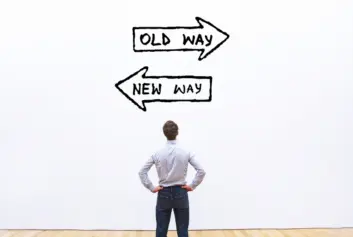For the last several years, organizations have seen a lot of change and no more is that true than from the HR and talent management technology perspective.
Forced to put in place internal HR systems to simply continue operations during the pandemic, improve employee experience in the wake of The Great Resignation, and drive efficiencies as we approach economic downturn, to say technology change fatigue has set in would be an understatement. These changes have been necessary and have enabled employees to create efficiencies and be more effective in an ever-evolving digitized workplace. The downside, however, is change fatigue can contribute to overall employee dissatisfaction and burnout. It’s important therefore, for businesses to understand what causes change fatigue and how to tackle it as they move forward in their HR digital transformation journey.
What is change fatigue and why does it exist?
According to research by Gartner, employees today can absorb only half the number of changes they could before 2019 without becoming fatigued. Change fatigue is defined as employee resistance to or general apathy toward organizational changes. Therefore, technology change fatigue relates to that resistance and passive resignation as it relates to technology projects. As organizations, we’ve asked employees to not only navigate adoption of several new HR and talent management technologies; but we’ve also asked them to make changes in other areas foundational to how we run and operate our businesses (ex., expectations around in-person vs remote vs hybrid work). After spending the last several years learning, unlearning, and relearning behaviors, employees as whole individuals are inherently tired and looking for stability. The challenge, however, is that even with multiple platforms in place, an organization’s HR technology ecosystem is always evolving, and it’s critical to be able to continuously adapt. With this in mind, below we outline ways organizations can tackle technology change fatigue from three different perspectives: the organizational level, project team level, and the individual level.
Organizational Level
Most organizations have undergone some form of HR digital transformation during their existence, a decision typically made to ensure organizational targets are met effectively and adopted efficiently. Yet, according to an article by McKinsey, 70 percent of large-scale transformation programs fail, due to a lack of employee engagement, low support from management, and inconsistent cross-functional collaboration all indicating a lack of accountability and exhaustion within the organization. So, how can businesses be more conscious in tackling technology change fatigue at the organizational level?
The key is strong organizational leadership. Organizational leaders can help reduce the burden of change fatigue on project teams and employees by:
Prioritizing Initiatives and Establishing Non-Threatening Language Around Digital Transformation
As key stakeholders in the organization, leaders are responsible for not only understanding the change initiatives underway in their area, but across the business. When it is decided by the leadership to implement “another technology solution” time should be spent to re-prioritize and communicate updated plans to employees proactively. In that communication, it is important to establish non-threatening language around digital transformation initiatives. Language plays a crucial role in how ideas and initiatives are perceived by a recipient and organizations that communicate clearly and often enable employees to receive information in a positive manner, reducing change fatigue.
Inviting Employees into the Change Journey
Often employees view technology change as disruptive to their day-to-day work so it is important for leaders to share how an intended change will ultimately make employees’ lives easier. By communicating how employees’ work directly impacts the organizational strategy and direction, and connecting the reason for the technology change, employees are much more likely to embrace it because they understand what’s in it for them.
Making Themselves Accessible and Showing It
A common phrase “My door is always open.” while well intentioned, is so broad that it can be intimidating for employees who may not truly understand when it is appropriate to approach their leaders. Instead, as a leader, go to your employees. Setup coffee chats, plan department specific meetings, or hold office hours to show employees you truly are accessible. As a result, employees will feel more a part of change and less fatigued by the idea of another change initiative. It is also a great way to get a temperature check on your employees’ day-to-day activities and how burdened they may or may not be feeling by their work and life.
Project Team Level
Project teams responsible for leading and implementing technology initiatives within an organization are crucial to determining the success of the change. While everyone within an organization can experience change fatigue, the teams implementing the platforms may experience the impacts more often and earlier than the rest. Change saturation, a term used to describe a situation where there are more changes occurring than even the project team can adopt, typically results in change fatigue. Here are some ways to tackle change fatigue within technology project teams:
Sustainably Resource Project Assignments
Digital transformation projects often have a heavier learning curve associated with them, particularly when a new system is being deployed. Ensure your team members have the capacity to fully commit to the project at hand and be very intentional about resource allocation. A change fatigued project team is going to struggle to champion change within their organization. Consider how thinly spread employees are before adding them to the project team just because they’ve participated in similar efforts before. Introducing someone new may be the energizing force you need to get the project over the finish line, not to mention the opportunity it presents for employee development.
Encourage Healthy Project Team Development
Like people, a newly formed team goes through a series of development stages (Forming, Storming, Norming, and Performing). Teams that are not given the space to navigate this process, do not establish healthy relationships, and are susceptible to burnout and feelings of discontent ultimately leading to change fatigue. It is crucial for project teams to establish these healthy relationships. A team will only be as effective as its commitment to the work at hand and its members.
Communicate Intentionally
Communication is key to the success of any project, and crucial to keeping team members engaged. At the same time, be intentional with communications. By establishing intentional communication, you eliminate unnecessary or overcommunication within the team. Think through who on the team needs what information and build an information hierarchy that allows people to share information appropriately. This helps create ownership, form healthy channels of communication, and reduce the likelihood of change fatigue caused by overcommunication.
Individual Level
Finally, there is the individual level stakeholder, those employees required to engage and adopt an organization’s technology change initiatives. Employees experiencing an oversaturation of change can be left unsure about which digital transformation projects impact them most and which can be focused on later. Below are three ways to help individual employees tackle technology change fatigue:
Give Employees the Tools to Be Self-Sufficient One Step at A Time
The greatest fear and most exhausting part of change is the unknown. It is important to provide employees with the tools and training to understand each technology change, how it impacts them directly, and what they can do to upskill themselves on the new technology. This does not have to be a one size fits all approach. Embrace differences and create space for innovation so employees can be in the driver’s seat of their learning journey, avoid change fatigue, and at the same time, support the organization’s overall initiatives’ successes.
Pause, Step Away, and Reengage
Digital transformations are hard, and it is appropriate to acknowledge that. Make sure employees are creating room for themselves while learning about the new system. To avoid burnout, encourage employees to create time in their workday to focus on other tasks, reconnect with colleagues, and engage in physical movement (i.e., a walking meeting). Regardless of the activity, the important thing is to encourage employees to step away when they are feeling overwhelmed by the change. In doing so, when it is time to reengage, they will be better able to focus on the task at hand and think more creatively about how to address any challenges they are facing.
Celebrate Successes
For employees to embrace technology changes, it is important to celebrate successes. Identify ways your organization can recognize individual employees that have supported a change initiative without being on the project team. This could be an employee teaching another something new they learned from a system that was recently implemented, or even being the first data record of a completed learning in a new platform. To avoid change fatigue, it is important to celebrate individual small wins.
Putting It All Together
Tackling technology change fatigue is difficult, but not impossible. By applying best practices and fostering a culture of learning and understanding, organizations can embrace and anticipate change in an optimistic and effective manner.





